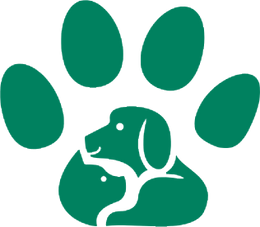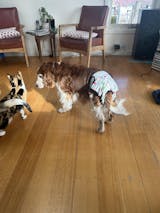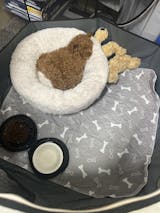Perfect Schedule for a 6 Month Old Puppy Potty Training
When you bring your puppy home, there are so many new experiences and things to consider that you may overlook one of the most critical aspects of puppy homecoming: establishing a routine. The routine for a six-month-old puppy will provide structure, making a move from outside to inside much simpler.
In addition, your new canine family member will feel more confident if he clearly understands what is expected of him. By the way, a schedule benefits the puppy and makes life easier for the human members of the family. Of course, you don't have to plan out every detail of your dog's day, but there are a few key areas where having a routine might help.

In this writing, we discussed when your old dog needs to pee and poop. It can vary between age, breed, health condition. This is approximate timing. Also, we tried to give you a complete understanding of how to potty train your dog outside and inside on a pee pad. You will learn why using reusable puppy pads are essential. My dog is 6 months old and not potty trained. Don't worry; we covered you.
Now you know how to train your dog. But how to make the most of it. Last but not least, we wrote the secrets that helped us throughout the years. So let's get to the business now.
Learn Older Dog’s Potty Training Signs First
Congratulations if you've saved an adult dog! You are one of the fortunate people who will discover how pleasant it is to provide a loving home for an elderly dog. Start your older dog potty training as soon as possible, and one of the advantages is that housetraining is usually much easier for them. In addition, the capacity of an adult dog to "hold it" for several hours makes the operation more straightforward than for a puppy. This isn't to say that you should make her do it.

An older dog is just like a puppy. They need to go outside more frequently. So we made a list of approximate times they needed to go pee. But it all depends on their age, breed, health conditions.
- First thing in the morning when they wake up
- In the middle of the night, depending on age every 4-6 hours
- After naps
- After exercise or playing
- After drinking water
- After eating
- Last thing before bed
- First thing in the morning
- Last thing at night
- Right after eating
Is that a clear picture of the level of dedication needed? That's precisely what it should be!
Older dog potty training isn't easy, and it's not about the dog; it's about making sure you take your puppy outdoors frequently enough and maintain control over his surroundings.
How To Potty Train Your Dog Outside
Older dog potty training can be harder than training a puppy. But it is not impossible. It will take more time and patience.
Determine a spot
Put your dog on a leash and walk them out to the area of the yard where you want them to go potty. Then, don't walk any further. Instead, wait for your pet to go to the bathroom. Reward your baby with treats and vocal praise when they succeed. Peeing outside will become a pleasurable experience as a result of this. Do it on the spot, so they understand that they are having the treats because they pooped outside. If they don't leave, bring your dog back inside and repeat the process. They'll pick it up quickly.

Teach Your Dog A Cue
Isn't it true that your dog can't inform you when they need to go potty? If you teach them a "potty cue," like a bell, they will be able to do so. Potty cues begin with training your pet to communicate their want to go outside. Next, your dog will start to link the sensation of peeing with being outside of your home.
Use A Pee Pad When You’re Not Home
When you're not at home, limit your pet to a particular area, such as a pee pad. When you aren't present to hear or see the cue, accidents are less likely to occur in your bedroom, living room, or other rooms. You can try Dry Paws highly reviewed reusable pee pads.
Accident Can Happen
Accidents happen, and they're not the end of the world! Your floor will survive, and your dog will learn that there are better places to pee with patience and understanding. Simply mop up any spills immediately and keep your dog's space clean and neat, free of any potentially soiled items. You can clean his potty with the same cloth you use to clean yours. It could be a hint for him to go there and poop. Any damp bedding or stuffed animals should be washed immediately.

How to Train Your Dog to Pee on Pads
After taking your dog in the house, the first thing you should do is start his house training. To do so, first understand your dog’s needs. Create a 6 month old puppy schedule. Try to be strict to the schedule. It will be easier for your dog.
Choosing a Pee Pad
A toilet pad's purpose is to give a visible, constant spot for your puppy to relieve himself. You'll want something absorbent, easy to clean, and big enough to handle the messes that your puppy generates.
Introduce Your Dog to the Pad
Allow your dog to check and sniff the potty pads you've selected. This will help it become acclimated to the new thing and not be afraid of it when it's time to go potty. Allow your puppy to walk on the pad as you repeat a command, such as "go potty," at potty time. Use a fixed one.

Learn The Signs
Instead of playing or chewing on a toy, your puppy will start sniffing around on the ground, indicating that it has to go potty. You should take it up and set it on the potty pad if it starts doing this.
Reward Your Dog
Puppies respond well to praise and treats. So if your dog uses its toilet pad, make sure to praise it right away. This can be expressed verbally in an eager tone of voice, by caressing your dog, or by providing it a unique, soft reward that is only given when it is time to go potty.
Be Consistent
Maintain a consistent schedule for your puppy. This will help you anticipate when your puppy might need to go potty. Each time, say the exact command phrase. Keep the potty pad in the same spot until your puppy begins to use it on his own.
Your Dog is 6 Month Old and Not Potty Trained?
My friend and I met a few days ago. He told me, "My dog is 6 months old and not potty trained," because I am a fellow dog parent. Is this a sensible choice? Or is it too soon to start training a six-month-old? I'd say you're running late. If you didn't train your puppy when he arrived at your place at a young age, he learned to pee in the house. Peeing in the house is no longer unusual for them. So, are you able to alter the situation? Don't be concerned. You certainly can. However, you'll need to be a lot more patient.
First, decide if you can use it outside or need a pee pad in the house. Whatever the spot is, introduce it to him. Let him sniff and check.
Second, teach him a cue. So that you can understand, he needs to pee. Use a command.
Third, Give him treats if he does it correctly. Giving treats will make it a happy experience.
Last but not least, as he peed in the house before, the accident rate during the training will be a lot higher. Do not scold him. Do not frighten him. It will delay the whole process.
Which Pee Pad Should You Use- Reusable Or Disposable?
Disposable pads are handy, but they are not environmentally friendly. They will be thrown away as soon as a puppy pees on them. This significantly boosts your plastic trash.
Every day, you'll use and throw countless pads. Indeed, disposable pads are now available that absorbent that they can last all day. However, even one disposable pad thrown away every day has a significant detrimental influence on the environment.

Plastic garbage has a bad influence on the environment, so why not minimise our usage of it? Of course, we can't boycott all plastic-containing products. However, eliminating single-use disposable items might drastically cut our consumption of plastic.
If you're stuck between battling for the environment or a stink-free home, I've got the perfect answer for you—a reusable pad.
The only drawback is that they must be washed every day, but that is a small price for such a unique take on pads.
A pack of disposables is nearly the same price as a single reusable one. However, you'll go ahead and buy multiple packages while using the reusable one. So having a reusable pad will save you a lot of money in the long run.
Puppy Pads from DryPaws have a unique three-layer design that eliminates leaking, odour, and tracking of canine waste. It's tough, machine-washable, and ready to take on whatever your pet can throw at it. So give your pet the freedom to sit with you whenever and wherever you choose!
My Success Schedule & Secrets for 6 Month Old Puppy Training
We assume that you created the 6 month old puppy schedule. But how to make the most of it?
Consistency:
What's the secret to potty training a dog with ease? Consistency! I can't emphasise this enough. When it comes to dog training, consistency is essential. Having a schedule and keeping track of everything is important— not in your head, but on paper, computer, or even your phone.
When it comes to teaching your dog this new behaviour, there are no shortcuts, and organisation will be crucial. You should track how often you go for walks, how long they last, and even if you have any accidents, as this can help you spot a pattern.
Keep A Routine:
Your new best friend is sticking to a schedule. Feeding your dog at the same time every day will help them stick to a routine. (Keep in mind that they may require two to three meals per day.) I recommend taking a walk shortly after waking up from a nap and 10-30 minutes after eating, drinking, or engaging in any other strenuous activity. Keep a sharp eye out! What goes in must come out, so keep an eye on your food and drink intake. This also goes with old dog potty training.
Understand Your Puppy:
Too many owners leave their puppies outside and "expect" them to go potty, but instead, the puppy chases and plays with a butterfly or a leaf, then returns inside and needs to go pee!
Alternatively, he may begin to go pee but become distracted by a noise or something that visually floats by, causing him to interrupt his flow to investigate. But, again, as the owner, you must be present to know that he was probably not through with what he was doing and may want additional prodding to complete it.
Would my puppy have accidents if I left him outside alone and didn't follow him around and then gave him entry to my house? He certainly would!
Ring The Bell:
The next step is to ring the bell! You must progress from one stage to the next, cleaning up the rare mess and bringing your puppy outside (i.e., changing diapers every few hours). It's now time to attach the bells to the doorknob and begin the ringing behaviour, so he can alert you when he needs to go outside. You can follow this step if you want to do old dog potty training.
Do Not Yell. Ever.
Never yell at your puppy; yelling can set him back and scare him! You wouldn't expect to bring a baby home from the hospital without any mishaps. And, as parents of toddlers know, children have good and bad days; how can we expect our pets to be perfect? But, on the other hand, do not punish him either. He'll be frightened of you and will avoid you all the time. You don't want that, do you?
















